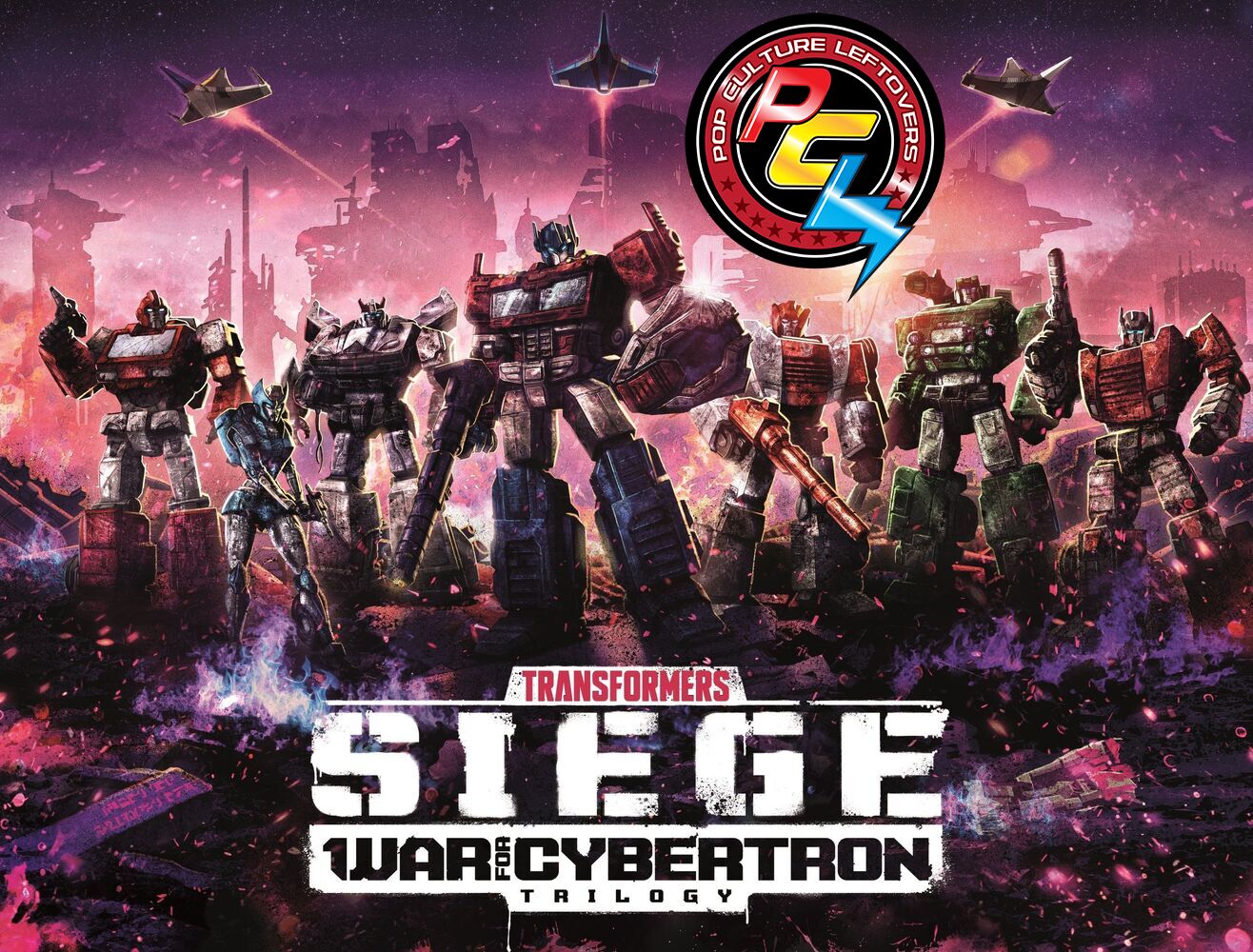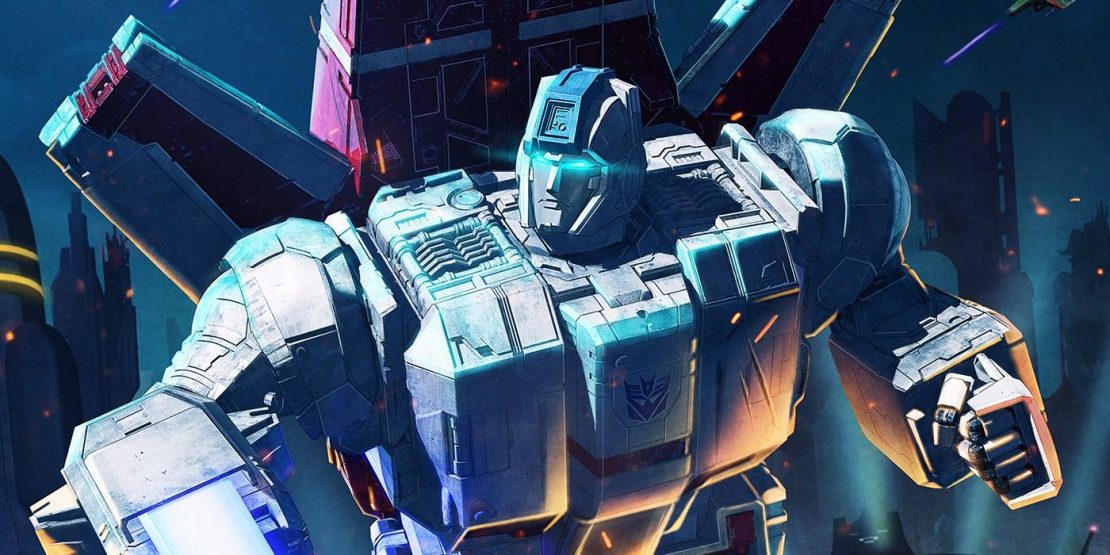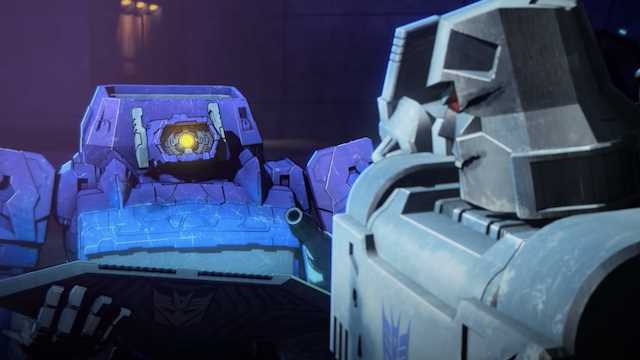
“Transformers: War For Cybertron” Netflix Review Part 1 SIEGE by Steven Redgrave
September 6, 2020 5:13 pm |

Netflix surprised the world when Transformers War for Cybertron Trilogy was announced. After what Paramount Studios and Michael Bay had done with the live-action franchise, it’s safe to say that many of the long standing fans of this beloved franchise were cautiously optimistic for this series.
The Series has been set up as a trilogy with the first release called Siege, which consists of six episodes, running roughly twenty-five minutes each. The other two sections of this series will be released at a later date. I think releasing the episodes in clusters will be an ultimately better method. The enjoyable thing about Siege is that it was essentially a two hour movie, easily digestible like a chilled cube of energon on a long cycle in the Sea of Rust.
Siege takes place on the Transformers home planet of Cybertron, directly in the middle of the civil war between Autobots and Decepticons. The design of the world settings throughout the series, emphasises the chaos and destruction that this planet has endured among these conflicting factions. Both Kaon, the Decepticon headquarters, and Iacon, the Autobots headquarters, were prominent cities among the planet, now portrayed as aged and worn down rubble. However, the detail around the environments and backdrops give viewers a glimpse of how vibrant and unique the landscape of these cities could have been. Other familiar locations are visited from the Transformers lore. Not every iconic location makes an appearance, at least yet, but places like Praxus are mentioned, providing great potential to expand the universe later. They are, at the very least, fun nodes for long time fans to find.
The visuals of this show are simply stunning. Every aspect has detail that amplifies the overall atmosphere. The foundation of the art style is centered around cell shading, which typically can give a cartoonish look when used, but ironically, it works well in this to give a more rugged look to the characters and world. Textures among the environment highlight reflections, metallic coats, and even the littlest detail of scuff marks covering characters and surrounding objects. The lighting detail seeps into every crack and crevice of the intricate character models, giving the viewer insight of the environment. Even the lighting from sources on characters light up and reflect. Eyes illuminate the surrounding surfaces, sometimes a character will be angled in a way that doesn’t even show both eyes, but the lighting given off will expand the details.
Audio also plays a strong role in this series. The opening scene of episode one brings a Decepticon Seeker flying the skies to then transform and land on the ground. This moment set the tone for the series and brought in a warm nostalgic feeling. I was instantly teleported to memories of watching the original G1 cartoon from the 80s. There are many iconic moments to the franchise and sound effects like these mean a lot to fans. Other details were the sounds of metal clinging when characters would walk or simply the sounds that their bodies would make from movement. Much detail was put into these characters, even their voices. Although many voices were not the ones expected, like Peter Cullen, who was surprisingly missing, the cast was mostly returning actors from previous incarnations of the shows. Optimus Prime, specifically at times, would sound familiar to Cullen’s iconic take, but other times he seemed unrecognizable. It was hard to detect if this was intentional or not and the lack of consistency was overly noticeable. Some characters were given an overlaid robotic tone to their voices, which worked really well for specific characters that are known for their voices. Megatron and Wheeljack are some notable characters that really sounded true to the characters. One majorly notable disappointment was the execution of Ironhide’s voice, which sounded completely off from the character. Without the character design being obvious, viewers wouldn’t have recognized him.
Much like Ironhide, many of the characters had their traditional 80s design implemented in a way that matches the new art style of the series. However, some characters had drastically different takes to their designs. The Decepticon Seekers, in robot form, appeared very similar to their G1 counterparts, but while in vehicle form, the characters took on a futuristic and untraditional take. They actually appeared very close in design to the looks of these same characters in the War for Cybertron video game franchise by High Moon Studio. It felt like they mixed and mashed both versions of these characters into this new take on the Transformers, possibly to appease fans of both realms. Starscream was an obvious mix of the two, while Bumblebee, who had a very slick design in the games, surprisingly, has his traditional G1 design in this series.
What really stands out for this series compared to the others is the use of these characters and their factions. The obvious Autobot vs Decepticon plot is there, but beyond that we get a glimpse of a Cybertron that has bystanders and civilians that are stuck in the middle of what is happening on their planet. They have no allegiance to either side and are simply trying to survive among the destruction and war. Some of the well known characters on each side are portrayed in this series with no affiliation with either faction. It is a nice take to see a grey area among the population. It gives viewers a more grounded take on how citizens would have realistically dealt with the issue.
Other characters start on one side with their extremist mindset, but build and thread these story arcs where they may start to sympathize with their enemy or completely have a change of spark for what they believed their ideals were. Many of these characters have a long history and unique relationships among each other within both factions. Viewers will be caught off guard with the transformations that some characters have from their subtle conversations to the full actions they take by the end or even the beginning.
Megatron isn’t initially the cold-sparked brute he has always been depicted. In this world, he is fighting for civil rights and while Optimus Prime fights for the same thing, he has a completely different view on how to obtain these goals. The two leaders are mentally brothers and that history is slightly touched upon and teased, but never fully gives the context of what truly took place. Optimus has moments in this series where he reflects the same obsessive and stubborn traits as Megatron. Highlighting just how similar they may be after all. Ideology is the base of this war and the series focuses on that in a way that doesn’t seem to have been tackled before on the small screen.
Fans of the series will be in awe at the amount of recognizable characters the series included. Optimus Prime, Bumblebee, Wheeljack, Ratchet, Prowl, Arcee, Ultra Magnus, Megatron, Starscream, Jetfire, Soundwave, Shockwave, etc. This series is crammed with iconic characters on all sides of the war. They even brought back G1 characters that have been missing in action for a while. Alita One makes her return. Not only is she back, but she has a pretty impactful role to play.

One flaw in having so many characters is that so many of them have similar designs and the only distinguishing factor is their color schemes. Unfortunately, some characters are so similar in both aspects that it was hard to tell who was on screen in specific scenes. At one point a character shows up in a scene and it confused me because I thought the character had already died episodes before. Once I figured out who was who, it made sense, but it wasn’t so easy to follow at times.
Using an alluring art style, Transformers Siege brings new and expanding ideas, invigorating this franchise for a new wave of fans, while keeping the nostalgia for fans of G1.
PCL Rating: Tupperware
Rotten Tomatoes Rating: FRESH 🍅
Categorised in: Television Reviews
This post was written by Leftover Brian
Comments are closed here.




